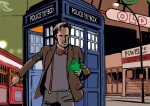 Wizard World Portland gets the Time Lord treatment in an exclusive variant cover for the upcoming show in February.
Wizard World Portland gets the Time Lord treatment in an exclusive variant cover for the upcoming show in February.
Viewing: Blog Posts Tagged with: Si Spurrier, Most Recent at Top [Help]
Results 1 - 8 of 8
Blog: PW -The Beat (Login to Add to MyJacketFlap)
JacketFlap tags: 11th Doctor, Alex Kingston, Arthur Darvill, Karen GIllan, News, Comics, Conventions, Doctor Who, Portland, Simon Fraser, Wizard World, Titan, Matt Smith, Si Spurrier, Rob Williams, Add a tag
Blog: PW -The Beat (Login to Add to MyJacketFlap)
JacketFlap tags: matt chats, Interviews, Comics, Image, Ryan Kelly, Si Spurrier, cry havoc, Add a tag
 Based on the first two issues I previewed, Si Spurrier with Ryan Kelly have crafted a captivating story about identifying the monsters inside and out. Cry Havoc, described as mixing “the hard-boiled militaria of Jarhead with the dark folklore of Pan’s Labyrinth,” is a fascinating piece of work, so I was excited to speak to […]
Based on the first two issues I previewed, Si Spurrier with Ryan Kelly have crafted a captivating story about identifying the monsters inside and out. Cry Havoc, described as mixing “the hard-boiled militaria of Jarhead with the dark folklore of Pan’s Labyrinth,” is a fascinating piece of work, so I was excited to speak to […]
Blog: PW -The Beat (Login to Add to MyJacketFlap)
JacketFlap tags: Comics, Conventions, Doctor Who, Run, Simon Fraser, Titan, Nick Abadzis, Assassin's Creed, Si Spurrier, Elena Casagrande, Conor McCreery, garth ennis, Mutafukaz, The Blacklist, NYCC '15, dennis calero, Ashley Witter, Mark Landry, Rachel Stott, Add a tag
Titan Comics is coming across the pond and bringing a robust series of panels and signings to NYCC 2015. Read on to get the scoop on how you can meet the writers and artists behind your favorite Titan titles.
Blog: PW -The Beat (Login to Add to MyJacketFlap)
JacketFlap tags: Matt Smith, Titan Comics, Si Spurrier, Rob Williams, Robert Johnson, Doctor Who, Bowie, Top News, Al Ewing, 11th Doctor, Alice Obifune, Eleventh Doctor, Add a tag
 Christopher Eccleston’s portrayal of the Ninth Doctor relaunched the Doctor Who television series in 2005, and many a fanperson has swooned over David Tennant as the show’s dashing Tenth Doctor. But it was Matt Smith’s portrayal of the Eleventh Doctor that crested the wave of Who-mania that has swept the globe in the last few years. Fans who were left pining for Smith’s incarnation of the time-traveling “madman with a box” will have reason to celebrate the release of Doctor Who: The Eleventh Doctor Vol. 1 After Life which collects issues 1-5 of the series. I spoke with co-writers Al Ewing and Rob Williams in advance of the March 25 release date (in bookstores and on Amazon.com March 31) about their past collaborations, the Doctor’s newest companion, and even got a few hints at what fans can expect in the forthcoming issues of the Titan Comics series.
Christopher Eccleston’s portrayal of the Ninth Doctor relaunched the Doctor Who television series in 2005, and many a fanperson has swooned over David Tennant as the show’s dashing Tenth Doctor. But it was Matt Smith’s portrayal of the Eleventh Doctor that crested the wave of Who-mania that has swept the globe in the last few years. Fans who were left pining for Smith’s incarnation of the time-traveling “madman with a box” will have reason to celebrate the release of Doctor Who: The Eleventh Doctor Vol. 1 After Life which collects issues 1-5 of the series. I spoke with co-writers Al Ewing and Rob Williams in advance of the March 25 release date (in bookstores and on Amazon.com March 31) about their past collaborations, the Doctor’s newest companion, and even got a few hints at what fans can expect in the forthcoming issues of the Titan Comics series.
Edie Nugent: Did the fact that both of you worked together on 2000 AD help you in co-writing this series? If so, how?
Al Ewing: It probably did – systems evolved during the writing of Judge Dredd: Trifecta, our 2000 AD crossover, that helped with the writing of Who. For example, I’m pretty sure we had at least one Skype conversation during that time, although more often we met in the pub. And Trifecta involved some very intricate plotting, some of which happened on the fly, so it was good practice.
Rob Williams: It helped too that we knew each other and were friends. It’s not as if you’re co-writing with a stranger because who knows how that might go. But yes, as Al said, we’d co-written once together with Si Spurrier on Trifecta, so we knew how to do it, and felt confident we could make such a situation work.
Nugent: The writing on the After Life series is very consistent. How did you work together to find the “voice” of the Doctor and establish continuity of that voice through the series?
Williams: I think his voice is very well established by the series and by Matt Smith’s delivery. It’s easy to hear when writing dialogue for the book. If you feel you’re veering off track you just stick an episode of the show on for 10 minutes. Smith did the verbal patter very well.
Nugent: The audience knows Smith-era patter the moment they read it, but to have such an ear for writing new dialogue without it seeming forced: this just comes naturally to you?
Ewing: Well, writing any kind of unforced dialogue takes a lot of practice. But essentially, as long as the delivery seems correct, you can get away with a lot – Matt Smith can deliver a lot of different kinds of line and have them all seem part of the same character, so as long as the reader is hearing that voice in their head, it’ll cover a multitude of sins. I’m sure Rob and I both have writing tics that shine through once you’re looking for them. “…” for a pause is one of mine.
Williams: Without wanting to sound arrogant, I think Al and I are both pretty good with dialogue. The dialogue’s really not the hard part. Writing the Doctor he can babble on and you read it back and it’s all good stuff. But comics is a visual medium. So I find I have to cut a lot of my Doctor dialogue or the page would be overcrowded with speech balloons. The hard part with The Doctor is more the plotting, I find.
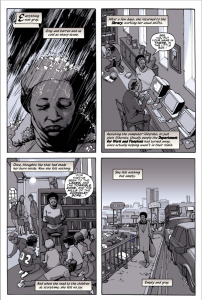 Nugent: Let’s talk about Alice Obifune. How did you dream her up? She’s got the smarts of Martha and the attitude of Donna (as well as many Classic Who companions like Zoe and Sarah Jane); questioning the Doctor and his motives. You mention in the series that the Doctor finds her wisdom and maturity a comfort, contrasted with his usually younger and greener companions.
Nugent: Let’s talk about Alice Obifune. How did you dream her up? She’s got the smarts of Martha and the attitude of Donna (as well as many Classic Who companions like Zoe and Sarah Jane); questioning the Doctor and his motives. You mention in the series that the Doctor finds her wisdom and maturity a comfort, contrasted with his usually younger and greener companions.
Williams: I think it was a case of trying to do something a bit different. The TV show usually has The Doctor with young girls as assistants. Smith looks so young, we thought it would be a fun dynamic to pair him with someone who seems to be physically older then him. Someone a bit more sure of herself having been through a life.
Ewing: I forget where she came from at first – it’s a long time ago – but I remember being very keen that she give as good as she get with regard to the Doctor. I’m pretty sure her age relative to other new series companions came up early on as well in connection with that – the idea that the actor playing Alice, if she existed as a TV series character, would be older than Matt Smith and have some natural authority there. Or maybe it was the other way around. I know her Dad dying in the Falklands set her age in stone to an extent, although I don’t know if we’ve gotten around to mentioning that at all.
Williams: It’s mentioned somewhere. I forget where.
Ewing: We know he died when she was small, and I think there’s a newspaper headline in one of the scenes about the end of the war, but I don’t know if we’ve connected the dots yet. It’ll be a nice tidbit for anyone reading this!
Nugent: There’s another thing that makes Alice so mature, aside from having more years under her belt than the average TV companion: she’s recently orphaned when the first issue opens. Very adult theme, that. Was there any push-back on opening the story line with such an emotionally dark moment: going through the motions and feeling empty following the loss of her mother?
Ewing: Not at all – I’m pretty sure everyone was up for that from the beginning. Originally, I think we were set to go much darker in terms of the overall plot – this is at the very early stages – but that ended up, rightly I think, being decided against. I think the balance between light and dark stuff we’ve got now is just about perfect.
Williams: Titan and the BBC were very supportive. I liked that opening very much. The subdued grey wasn’t what people were expecting. It’s a theme that continues through the entire series. The first ‘season’ of the comic is really Alice’s journey through her loss. Coming to terms with it, learning to move forward and live again. It’s the emotional spine of the book.
Nugent: So you worked together to co-write the series, even though issue 1 seems to be the only issue that’s co written (Al took issues 2,4 and 5 with Bob penning issue 3). Was it like television writing? Did you both form a ‘writers room’ of sorts at the pub or over Skype, blocking out the story arc and then individually write drafts?
Williams: We wrote half of #1 each. Al took #2, I did #3. Then Al did a two-parter with #4 & #5, I did #6. The entire 15 issue series is half Al, half me. #14 & #15 we’re writing half of each issue, so they’ll be co-written. The rest of the stories, there’s often little bits from one of us even if the other person is credited as scripting. My #10, for instance, Al made a suggestion there which helped nail down the theme. Lots of that going on. It’s a writer’s room dynamic throughout.
Ewing: That’s pretty much exactly how it went! For issue 1, we took eleven pages each and then did a lot of rewriting so they fit – after that, it’s been a matter of discussing where the plot’s going and where we want it to go on Skype, and then working out what’ll happen in each individual issue. (Or two-parter, if we’re writing both parts.) Mostly it happens on Skype – once or twice we’ve met up for a pint, but Skype’s probably more productive given the lack of booze.
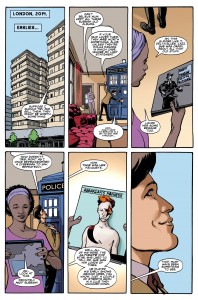 Nugent: I loved how you wove in these legendary musical figures: Robert Johnson, and the Bowie-like John Jones. It’s nice because so many of the historical figures we meet in Doctor Who stories are Queens or classic authors. What made you decide to highlight musicians and those two in particular?
Nugent: I loved how you wove in these legendary musical figures: Robert Johnson, and the Bowie-like John Jones. It’s nice because so many of the historical figures we meet in Doctor Who stories are Queens or classic authors. What made you decide to highlight musicians and those two in particular?
Ewing: Both of those are Rob’s doing, really – Jones was the companion Rob brought to the table, although I’ve had a lot of fun with him myself and rediscovered an interest in Bowie’s music.
Williams: That was just an idea born out off Bowie’s similarity to The Doctor in terms of regenerations. There’s always been a sense about Bowie of ‘where did this guy come from?’ Now, I’m sure certain substances were involved in that otherworldness. But what if, instead, he travelled with The Doctor? And that’s how he ended up with all these crazy outfits and looks etc. That seemed a fun idea. There’s a line in #3 which I think is true. If you had a time machine the first best use would be going to see all those classic gigs you’ve only ever read about.
Nugent: Al, Your issue 2 story centers on the idea of corporations ruining the ecology of a place, in this case Rokhandi and it’s natural beauty. The themes of industrial development and brainwashing could easily be transposed to the ecological worries of today. Were you intending to write the story as warning or wake-up call to the youth who will read it?
Ewing: I’m not sure I’d go as far as to call it a warning or a wake-up call – that sounds like I’ve got a bit more clout in the readers minds than I probably have – but Doctor Who stories should have some thematic links or resonances with what people are worried about in the real world. There was a lot of that during the McCoy era, as I recall – Doctor Who as a critique of Thatcherism. So yes, there’s more than a little in #2 that could be about corporate cronyism in politics or the selling-off of natural resources, but that’s all par for the course with Who.
Nugent: How are you both feeling about the recent news that your comic story line will merge with that of the tenth and twelfth Doctors this fall in a limited series to be written by Hugo-nominated Doctor Who television writer (and longtime Who fanboy) Paul Cornell?
Ewing: I’m looking forward to it! It should be a lot of fun, and I can’t wait to see what Paul does with our characters. I can’t think of anyone better to attempt a crossover of that nature, and I’ll be avidly reading every issue.
Williams: Paul’s a fine writer and a friend, so I’m sure he’ll do a stellar job and treat the Eleventh Doctor and Alice very well. I’ll look forward to reading it. And then we have ‘Season Two’ of the Eleventh to get up and running. We’ve already got a few fun, surprising things planned.
Nugent: Are there any more teasers you can give Comics Beat readers? Will we find out the identity of the mysterious Time lord that appeared to Eleven? Any other tasty tidbits?
Williams: You might find out the identity of the mysterious Time Lord in me and Al’s #14-#15 two-parter.
Ewing: Tasty tidbits…things are going to get very colourful in issue #11, and fans of a certain movie will be pleased with us.
Doctor Who: After Life Vol. 1 is available in stores on March 25.
Blog: PW -The Beat (Login to Add to MyJacketFlap)
JacketFlap tags: Top News, Si Spurrier, marvel zombies, Secret Wars, Nextwave, Comics, Marvel, Add a tag
You can’t have the end of the world without a few zombies. Earlier, Marvel announced Age of Ultron vs Marvel Zombies as a Secret Wars tie-in book. Today, Bloody Digusting announced a different Marvel Zombies in the never ending line of tie-in series. This book will feature the creative team of Si Spurrier (2000 AD) and Kev Walker (Magic: The Gathering). Marvel Zombies follows Nextwave veteran Elsa Bloodstone as she’s tasked with protecting a barrier part of the Battleworld known as “the Shield” from hordes of Marvel’s undead. All the while protecting her young companion and dealing with the memory of her father Ulysses Bloodstone.
In an interview with BD, Spurrier made it clear that while the story will center around Bloodstone’s internal and external obstacles there would be no shortage of horror fanatic zombie moments. Spurrier went into some graphic detail, “And hey, let’s not pretend that we don’t all get a bit of a kick out of simply seeing recognisable characters reimagined as decomposing cerebravores. That’s where Kev and I will get to cut loose on some fabulously icky visuals. Who doesn’t want to see a starvation-mad Sabretooth sucking up his own regenerating guts like spaghetti, or a zombie Carnage entirely composed of crusty bloodclots…? Fun.”
One thing more tie-in creators have been vocal about as of late is how much opportunity they’ve been given in these books to explore new things about both familiar and obscure characters. Instead of web like interconnectivity with the main event; it’s becoming more and more apparent that the majority of these tie-ins will have their own context readers can either pick up as separate tales or simply stay with the main Secret Wars book without feeling left out.
Marvel Zombies launches in June. It’s the second title to bare the Marvel Zombies name in Secret Wars, but no word on how long this series will run.
Blog: PW -The Beat (Login to Add to MyJacketFlap)
JacketFlap tags: Boom Studios, Top News, Simon Spurrier, Si Spurrier, jeff stokely, six-gun gorilla, Reviews, Graphic Novels, Comics, Add a tag
Let’s start with that title, shall we?
Calling a story “Six-Gun Gorilla” is a bold and audacious decision, one that’s guaranteed to attract a specific kind of person and give many others pause. If you come to this book cold, you will very likely either somersault with glee or scratch your head and wonder, ‘huh?” And that’s fair.
But after you’re done scratching your head you should grab the book from the comic shop shelf and buy it, or snatch it from you friend’s desk and implore them to let you borrow it, or click on the button that takes a little bit of money out of your bank account and tells the mailman to bring you a copy.
No matter what you think it is, Simon Spurrier and Jeff Stokely’s Six-Gun Gorilla is more than that. It is a title that simultaneously obscures and illuminates, promising something very plainly while hiding something deeper, something emotional, something meaningful.
At this point, If you’re a culturally savvy purveyor of obscure fiction, you might start to feel smug. You might be thinking of a certain fifteen-part serial published in a British adventure magazine in the 1930s. You might believe that such knowledge gives you a leg up on what to expect, and better information on which to base your decision on whether to pick up or pass on this book.
You too, would be wrong. That’s not to say that such knowledge won’t be rewarded in reading Six-Gun Gorilla, it’s just belaboring the point: this book isn’t what you expect it to be. It’s so much better.
The story starts simply enough. Our hero is a librarian who lost everything: his job, his love, his home, his car. With nothing else to lose, he signs up for a suicide mission to the Blister, a strange frontier where electricity and combustion doesn’t work and the high noon sun will burn you alive. Figuring out why he’s there, and what he’s supposed to do is part of the fun.
It’s a big reason why Ramón Pérez’s cover for the miniseries’ first issue (which doubles as the cover for the collected edition) is just as perfect as that title: it tells you exactly what’s inside the tin, but hints at something more.
Yes, there is a giant talking gorilla with huge freaking revolvers in this book. But what’s up with that there glowing blue face? And why do I need to ‘stand by?’ That’s not very Six-Gun. That’s not very Gorilla.
I can’t wait for you to find out. For you to be treated to Jeff Stokely’s art, which breathes hot, vibrant life into this neo-Western fable. For you to puzzle over this world as pieces are doled out to you in a manner that is spare but never frustrating. For you to be surprised at the depth of emotion hiding in plain sight.
Consider this line a spoiler warning if you’re already intrigued enough to give this book a chance. You don’t have to read anymore. This is for those that need the extra push.
Six-Gun Gorilla is a comic that knows you might think it silly. On the other hand, if it wore its true ambitions on its sleeve, you might think it pretentious. To come out and say that it is a story about stories might be intriguing, but it also does it a disservice, as does the word “meta.” The former denotes a certain self-importance, the latter a smug cleverness. The book is neither.
It’s about fiction and memory, relationships and honesty, pain and loss, beginnings and endings, media and meaning.
It’s also about a big-ass, gunslinging gorilla.
Give it a read.
When you’re done, let’s talk about all the stories we know, and why we know them. Let’s speak of the world’s we’ve been to that don’t exist, and why we keep them on our shelves. Let’s count all the lies we love because they make us feel, and why we need them.
Blog: PW -The Beat (Login to Add to MyJacketFlap)
JacketFlap tags: Previews, Titan, Top News, Si Spurrier, Jordie Bellaire, PJ Holden, Add a tag
Titan Comics, hearing about Tharg’s earlier visit, decided to also pop round for some tea and biscuits, and also handed me some paper. This time though, the paper was a first look – nobody else in the bally WORLD has seen these yet – at the preview for Numbercruncher #3 from Si Spurrier, PJ Holden, Jordie Bellaire and Simon Bowland!
Blog: PW -The Beat (Login to Add to MyJacketFlap)
JacketFlap tags: Comics, Marvel, Pixie, Top News, Marvel Now, Jorge Molina, Si Spurrier, X-Men Legacy, Reviews, Add a tag
X-Men Legacy completes the first arc, with writer Si Spurrier taking its lead character – which, I still can’t really believe, is Professor X’s son Legion – into a new direction, having thoroughly established him as protagonist worth following. He’s joined by artist Jorge Molina, who has spent the last year or so drawing essentially every X-Men book going, and is always a pleasure to see. This has been a scattered, easily distracted book (much like its lead character), but also a very funny, wonderfully melodramatic piece of work, and the best X-Men book around right now.
The first arc has worked hard to make sure that Legion is more than just a plot device – which feels a little out of character, given that’s basically all Legion has ever ever been, but still. To do so, Spurrier has leant heavily on the character’s Scottish upbringing, giving him not only a Rebus accent but also an attitude which is surly and independent. Like Rebus! He’s an annoying lead at times to spend time with, having a lot of new-age mantras in his head which are designed to help him keep his wonky powers under control. The character balances self-help with anti-heroics in each issue, which is mainly fun but sometimes irritating. It’s obviously an important part of the story, but Legion’s road to recovery can be a little tedious to read about sometimes. Not often, but sometimes.
But more than the main character, it’s the world Spurrier has built around his lead which is where the book starts to sing. From the cameos from off-centre X-Men like Frenzy and Chamber (who, given he is essentially a comic book version of Si Spurrier, gets all the best lines) to the global sweep of the narrative and the psychological elements of Legion’s powers, Spurrier quickly make sit clear that anything is possible in his story. He can spend an issue inside Legion’s head (literally) or in Asia, and it feels like a natural part of the story. The book can go into flights of whimsy or be brutally realistic. Rather than being stuck at a school in America, the series has a more escapist approach to the X-Men, which finds new real-world analogies to play around with, dismantle, and reassemble.
The central metaphor of the X-Men has been explained and explored to death over the years, but X-Men Legacy takes some of the old ideas and views them through a more contemporary filter, which suddenly makes the threat of prejudice and anger seem much more potent. The villain of these first six issues is one of the most vicious we’ve seen in years, a new creation who is genuinely scary and horrible to see in action. Issue 5 – the standout issue of the series so far – deals almost exclusively with establishing the villain, and Spurrier makes his origin just recognisable enough to be scary whilst also making it wonderfully ridiculous. The fantasy is stripped out entirely for a moment, as we focus on the evolution of a misguided child into a fully formed adult horror. He’s ultimately dealt with a little too suddenly – issue 6 runs out of space, it feels – but he’s a fascinating new character, and one I hope to see again.
That narrative over these six issues has been talked about a lot. Spurrier’s story does get easily distracted, with many different tangents suddenly appearing from nowhere, with some leading to a more rewarding place than others. For the most part, these drifts in focus have worked in favour of the book – it helps that Spurrier has the ability to point to his multi-personalitied lead and say the story is just mirroring Legion himself – but there have been some times when the story has wandered around, a little lost, for a few pages at a time. In taking time to develop Legion, the book has had to hold off on revealing the central premise which will push the story forward over the next few months, which has hurt the momentum a little. Hopefully with Legion now established, and a proper premise offered to readers, the book will have a firmer direction as it heads into the second arc.
PIXIE PARAGRAPH: There’s been a swarm of British writers towards Pixie over the last few years, with the pink-haired wonder attracting the attention of Kieron Gillen, Mike Carey, and now Spurrier. It’s meant that the character now actually has a Welsh accent, although she has yet to ask anybody what’s occurring. She appears in issue #6 for a page or two, and I am of course utterly furious with Spurrier for what he does to her. I won’t say what it is, but I will say that Spurrier at least manages in about six words to nail the character’s dialogue. She sounds just like Joanna Page, which is unanimously agreed to be the only way people should ever write Pixie. So well done for writing her properly, Spurrier – but I remain furious at her treatment. Compensation is demanded!
Issue #6 of X-Men Legacy is an incredible read, filled with fully-developed characters, funny jokes, exciting drama, and genuine tension. I don’t really know how Legion has become the centre of the best written X-Men book… but X-Men Legacy is one of the triumphs of the Marvel Now initiative, and the best X-Men book you can buy right now. It’s a wee wonder.
Steve Morris is… trying out one of these things where you self-promote yourself after an article you wrote. I have a webcomic! It’s called Stardark City. It’s lovely and I hope you might want to read it maybe sometime? You can also shout at me on Twitter, @stevewmorris.



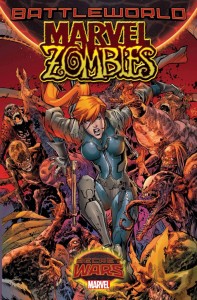
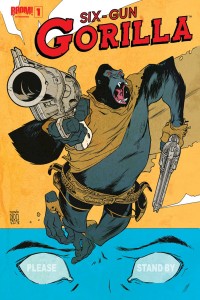

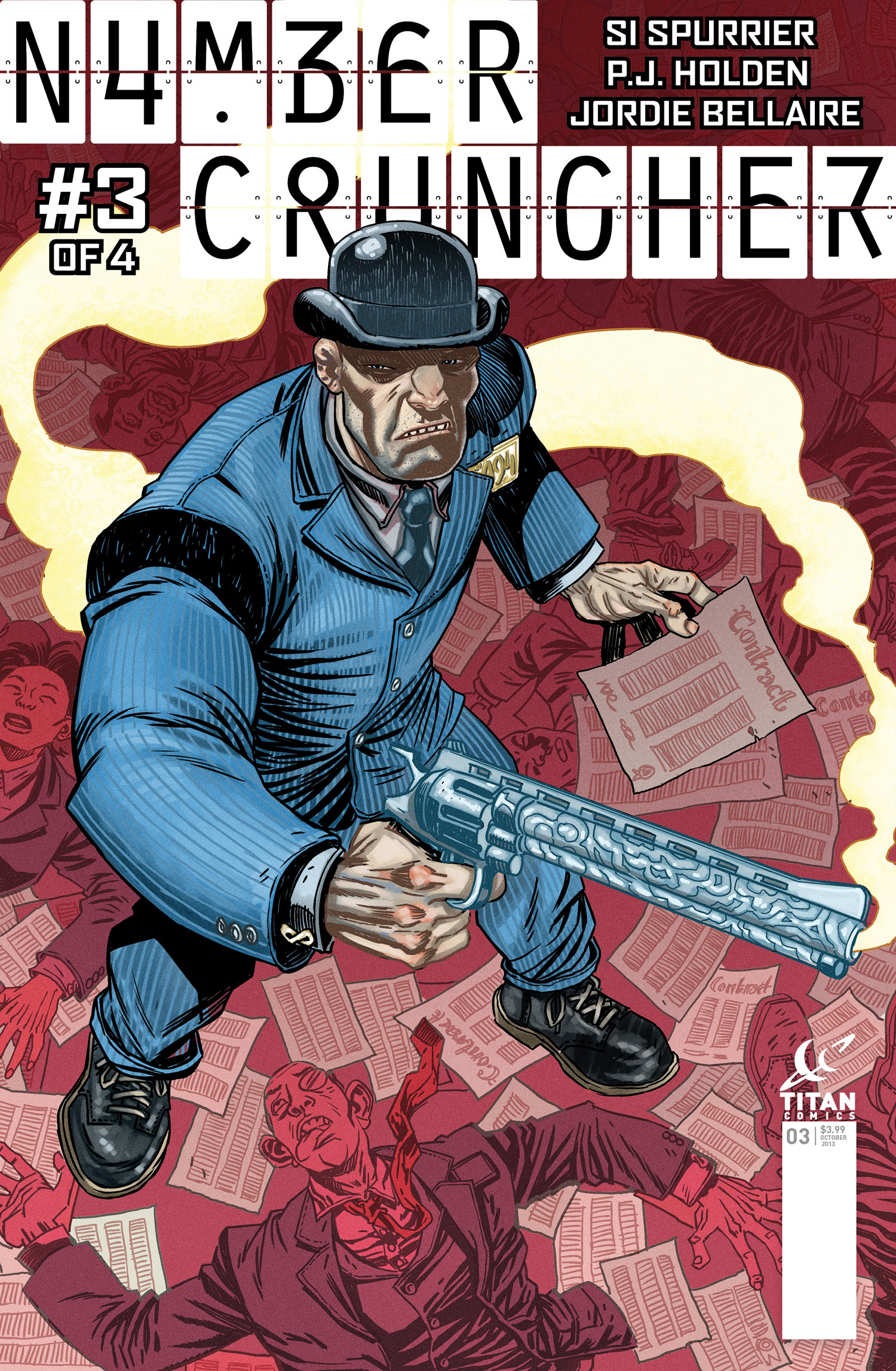

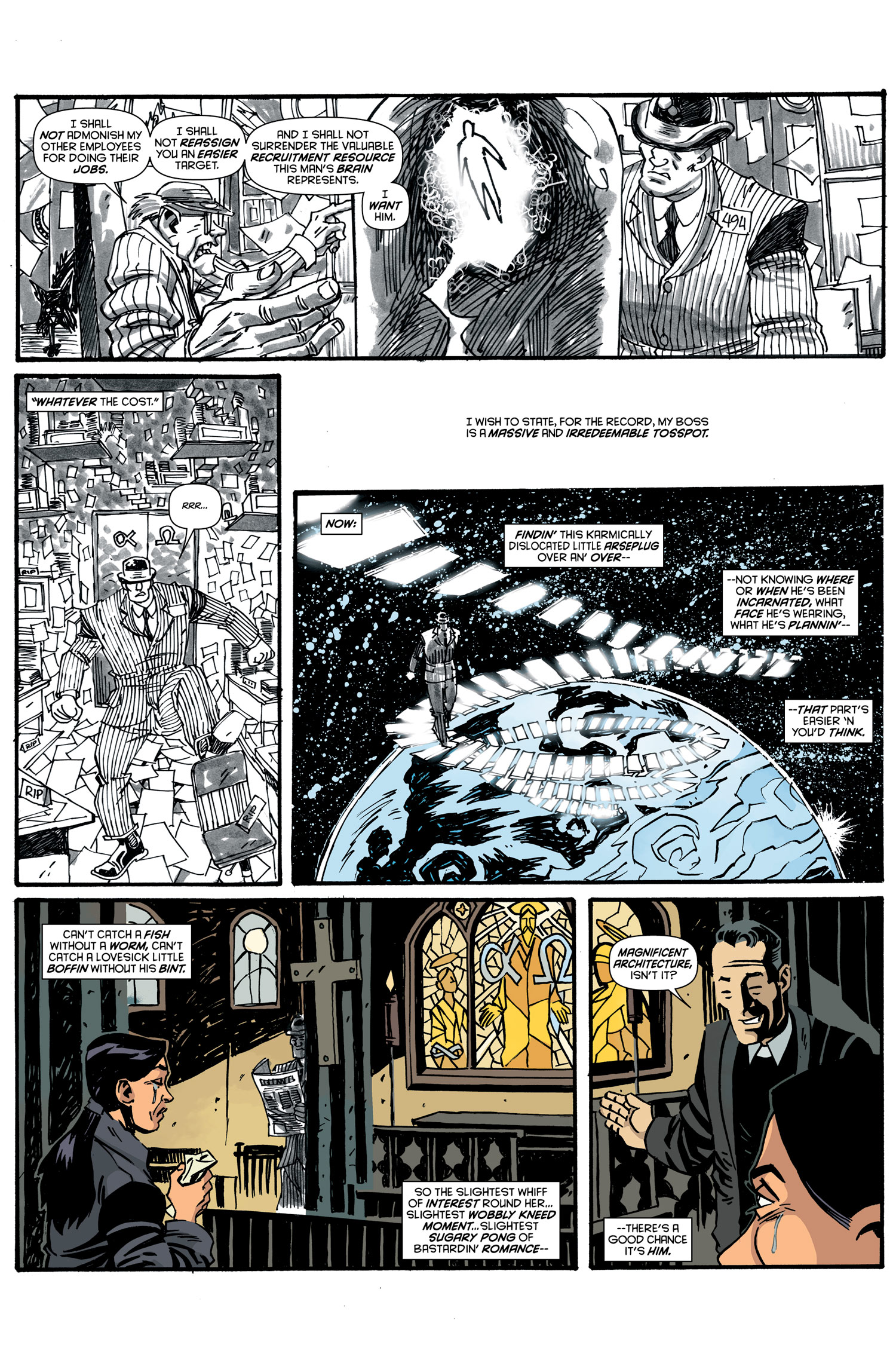
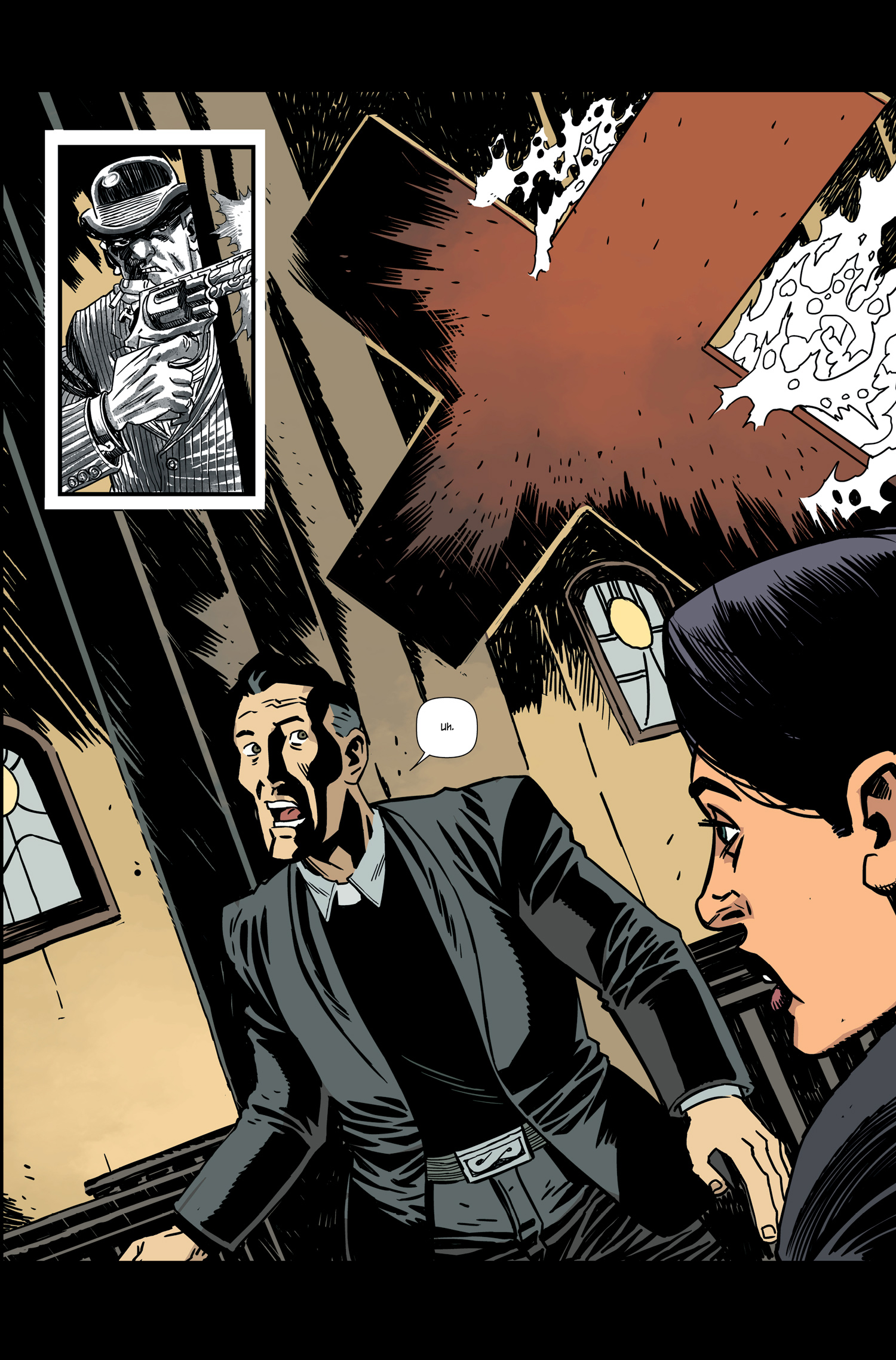

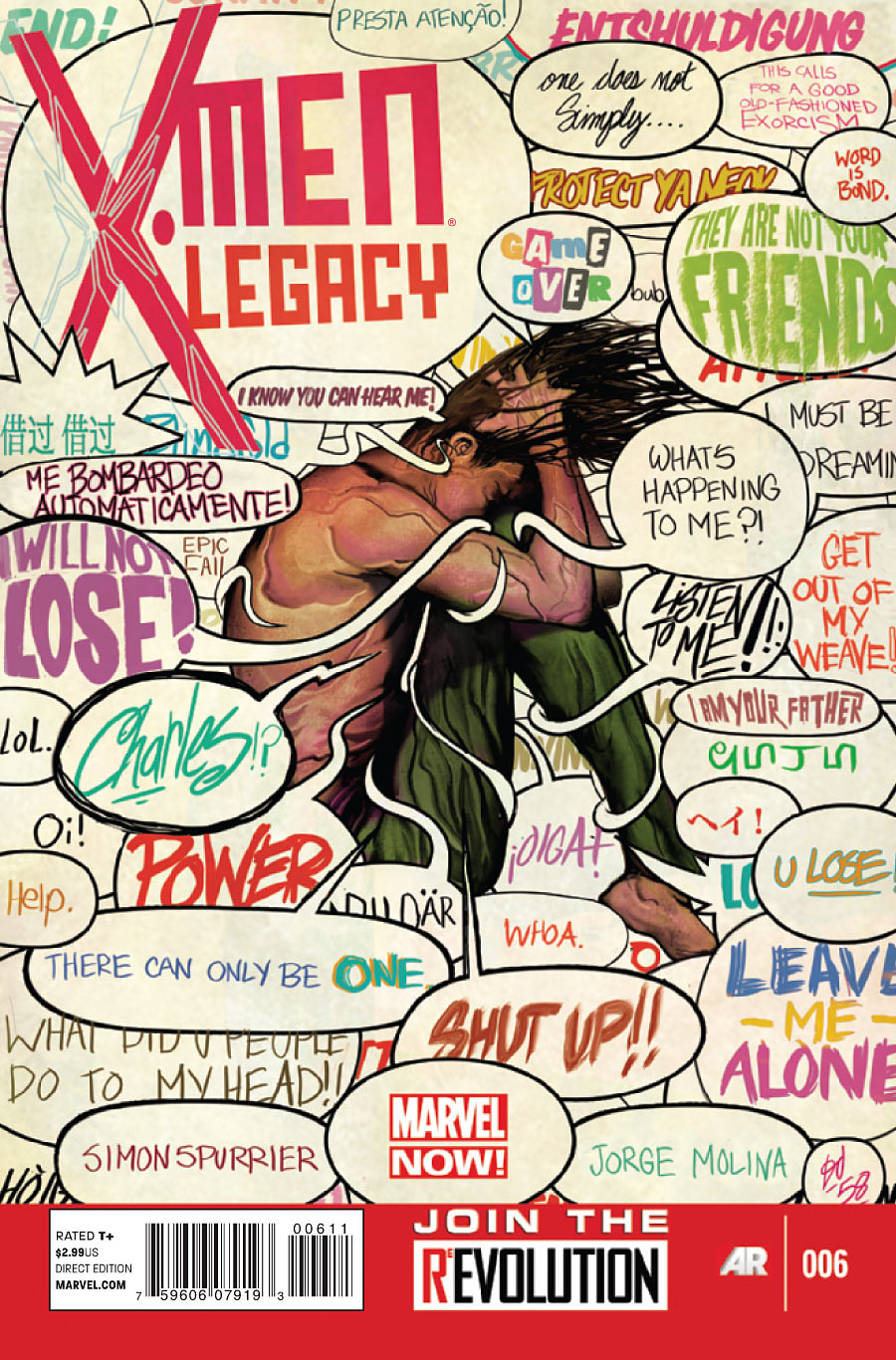
The Comic Book is fine yet when Mr . Capaldi(s) run is over , I suggest Three other actors that seem to have what it would take to do the role . Matthew McFayden , Ron Cook or Bill Nighy . If I see anyone else from some other shows I will post the perspective individuals .
@Prim_n’_Proper: Nighy would be a good fit, but (1) he’s a little too obvious and (2) there is no way the BBC can afford him. I’d love to see him on the show in some capacity, though, maybe as a Time Lord, maybe as a villain.
I’m not sure I recognize Matthew McFayden’s name. I’ve apparently seen Ron Cook in a couple things but don’t really remember him. Apparently he’s already been on Doctor Who in another role — but then again, so had Capaldi.
Yes, Ron Cook over MacFayden